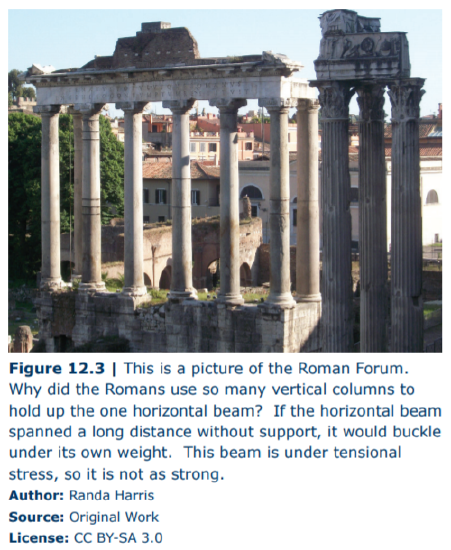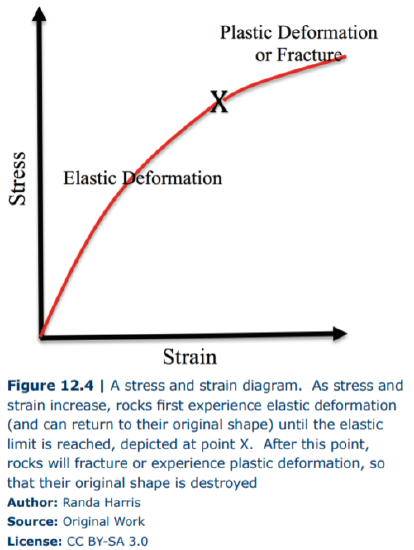12.2: Stress and Strain
- Page ID
- 5673
Overview
Rocks change as they undergo stress, which is just a force applied to a given area. Since stress is a function of area, changing the area to which stress is applied makes a difference. For example, imagine the stress that is created both at the tip of high heeled shoes and the bottom of athletic shoes. In the high heeled shoe, the area is very small, so that stress is concentrated at that point, while the stress is more spread out in an athletic shoe. Rocks are better able to handle the stress that is not concentrated at one point. There are three main types of stress: compression, tension, and shear. When compressional forces are at work, rocks are pushed together. Tensional forces operate when rocks pull away from each other. Shear forces are created when rocks move horizontally past each other in opposite directions. Rocks can withstand compressional stress more than tensional stress (see Figure 12.3).

Applying stress creates a deformation of the rock, also known as strain. As rocks are subjected to increased stress and strain, they at first behave in an elastic manner, which means they return to their original shape after deformation (Figure 12.4). This elastic behavior continues until rocks reach their elastic limit (point X on Figure 12.4), at which point plastic deformation commences. The rocks may bend into folds, or behave in a brittle manner by fracturing (brittle behavior can be easily envisioned if you think of a hammer hitting glass), but regardless they do not return to their original shape when the stress is removed in plastic deformation. The resulting deformation from applied stress depends on many factors, including the type of stress, the type of rock, the depth of the rock and pressure and temperature conditions, and the length of time the rock endures the stress. Rocks behave very differently at depth than at the surface. Rocks tend to deform in a more plastic manner at depth, and in a more brittle manner near the Earth’s surface.



